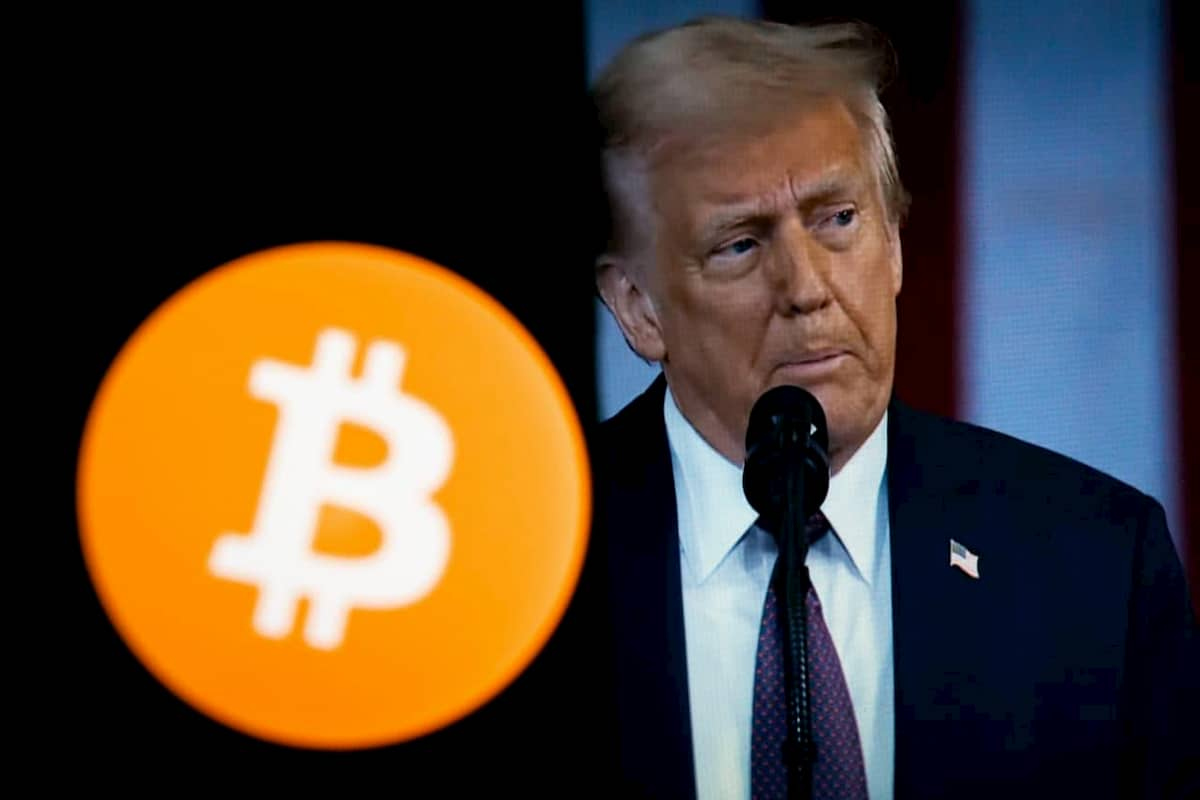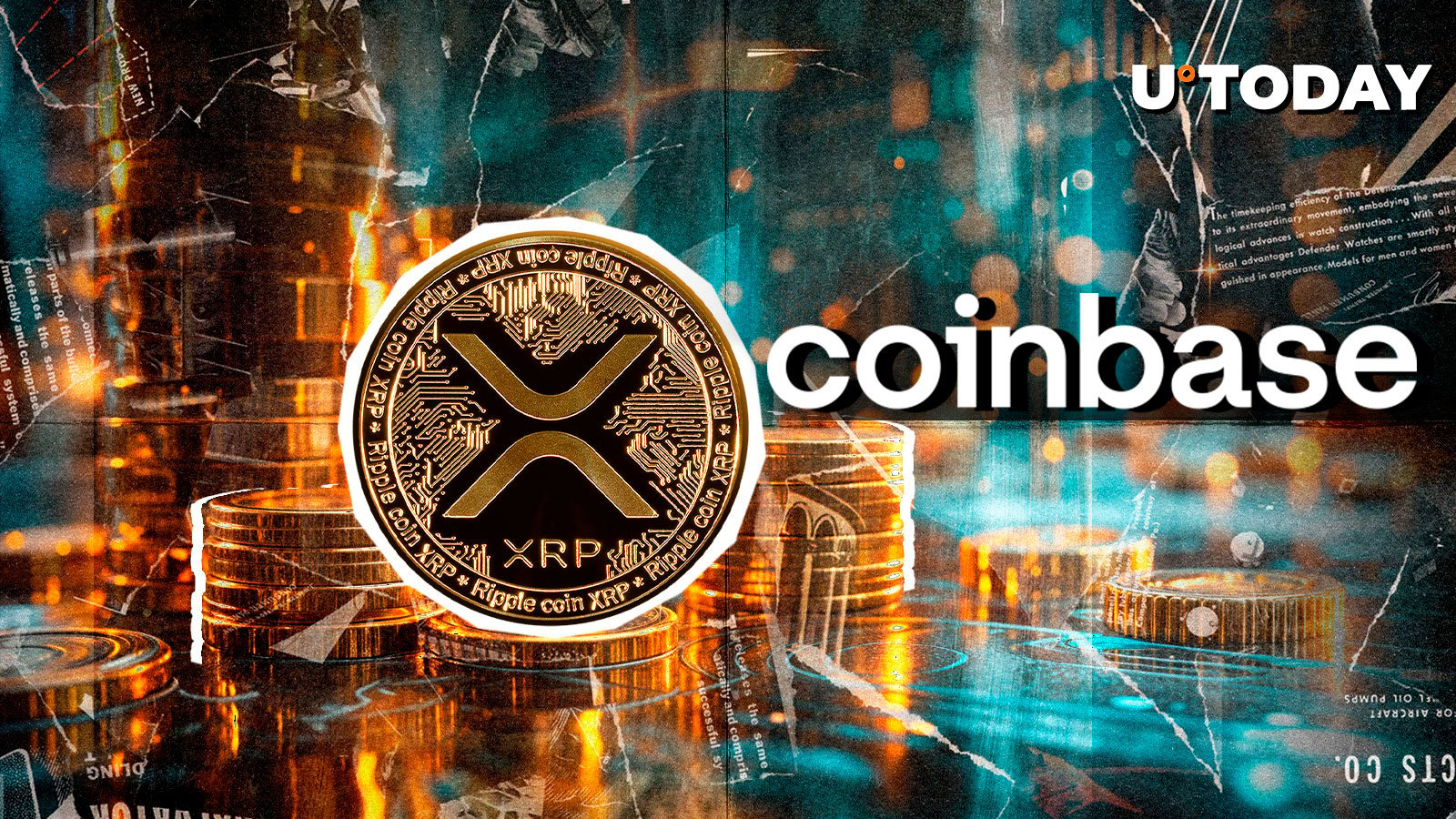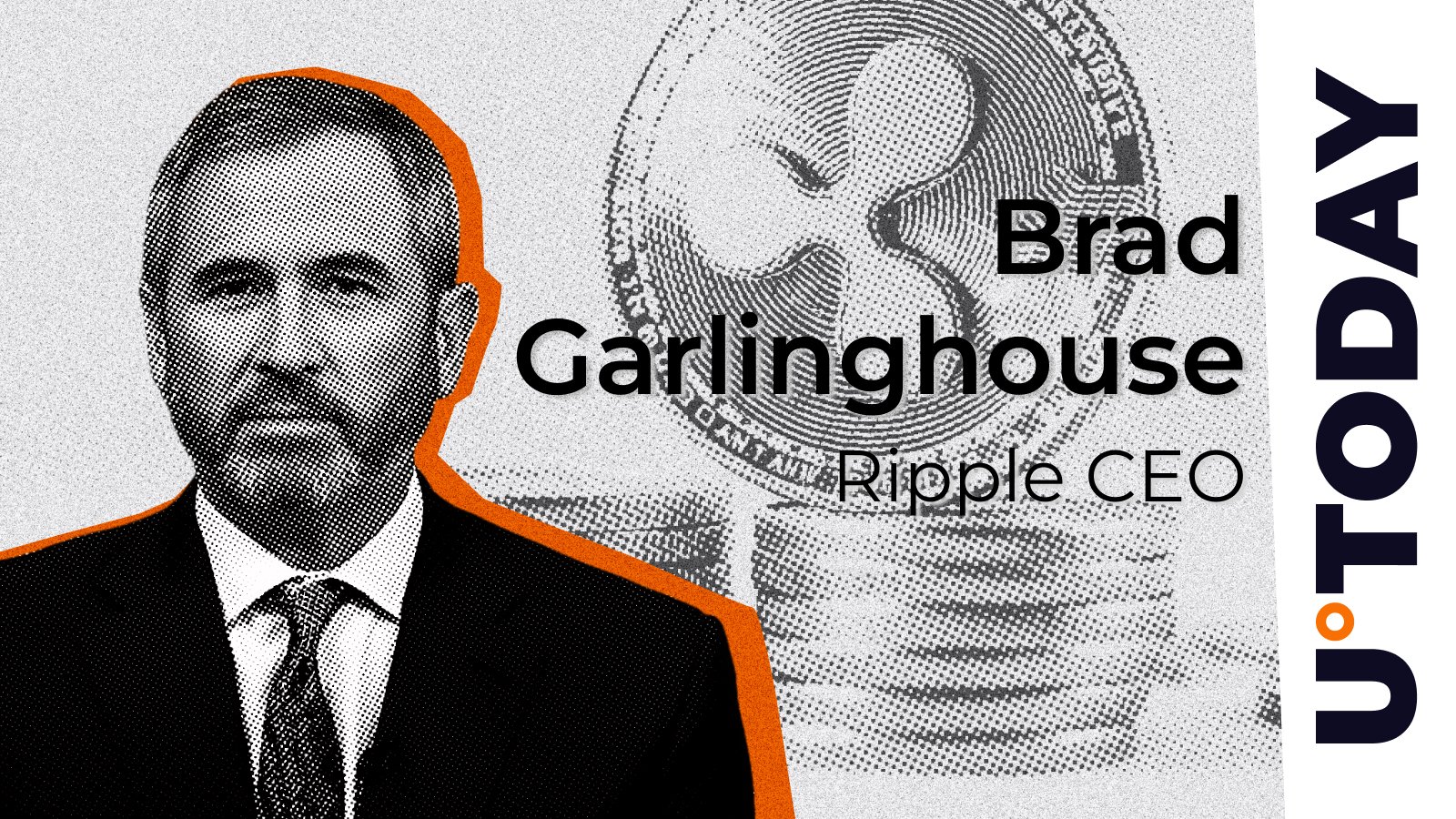
President Trump’s ‘Liberation Day’ tariffs yesterday wiped roughly $140 billion from the cryptocurrency market within a matter of hours. Notably, the announcement of the new duties being imposed caused an immediate sell-off from short-term Bitcoin ( BTC ) holders. To be more precise, short-term traders sold a total of 18,930 Bitcoins in the immediate aftermath of the trade war’s latest chapter, per a chart shared on April 3 by noted crypto chart researcher Ali Martinez on X . The multicolored Spent Output Age Bands (SOAB) chart delineates liquidations based on position age. Traders who had been holding Bitcoin for one to three months sold 3,113 BTC, while those who had been holding for three to six months sold slightly less of the cryptocurrency — 2,737 Bitcoins, to be exact. However, the majority of the sell-off came from investors whose positions were six months to a year old (3,983 BTC) and between a year and a year and a half old (9,097 BTC). 18,930 #Bitcoin $BTC were sold by short-term holders last night, immediately after @realDonaldTrump announced new tariffs! pic.twitter.com/pONWoxV5a9 — Ali (@ali_charts) April 3, 2025 At the time of the liquidations (roughly 02:22 UTC), the leading cryptocurrency was trading at $82,794. Therefore, the total value of the Bitcoin sold amounts to approximately $1.56 billion. Is the market turning bearish on Bitcoin? Over the course of the last 12 hours, the long/short ratio of the world’s premier digital asset fell off sharply. Namely, in the preceding 12-hour period, long positions and short positions were evenly matched, with a 50.14% to 49.86% split in favor of long positions. However, by press time on April 3, the situation had changed drastically, with 55.32% of the positions opened in the past 12 hours being shorts, and 44.68% being longs. BTC long-short ratio chart. Source: CoinGlass At the time of writing, the cryptocurrency was trading at $81,910, having marked a 3.43% decline on the daily chart, and a 1.06% decline from the prices seen at the time of the Bitcoin sell-off seen on Martinez’s chart. BTC price 1-day chart. Source: Finbold With everything taken into account, the present atmosphere has taken a bearish turn — even notable BTC bulls like Robert Kiyosaki are shifting their focus to commodities like silver as a defensive measure. Lastly, caution and patience are advised — current conditions are not favorable for either investing or trading — and without a clear catalyst to stop the bleeding, it’s unclear when the downturn could begin to reverse. Featured image via Shutterstock The post Bitcoin sell-off: 19k holders flee amid Trump trade war appeared first on Finbold .
Finbold
You can visit the page to read the article.
Source: Finbold
Disclaimer: The opinion expressed here is not investment advice – it is provided for informational purposes only. It does not necessarily reflect the opinion of BitMaden. Every investment and all trading involves risk, so you should always perform your own research prior to making decisions. We do not recommend investing money you cannot afford to lose.
Memecoins Surge in Popularity, While Fundamental Cryptos Maintain Steady Relevance from March 28th to April 2nd

The period from March 28 to April 2 saw a sustained and intensified shift in investor interest toward the cryptocurrency market—once again, directed by the rise of memecoins . This time, however, the most attention was not only on these meme-styled assets but also on some of their more traditional sector cousins. To be sure, AI, more utility-driven tokens, and Bitcoin itself held relevance this past week; however, the two that captured most of the attention during this week were Dogecoin and Shiba Inu—each having its own unique, and largely unimpeachable, reason for loving them. Trends from March 28th to April 2nd Insight: Memecoins are currently driving more attention, they are the dominant trend. They were consistent every single day AI, utility tokens, and Bitcoin still remain relevant There are still interest in fundamental crypto technologies… pic.twitter.com/rCKW6eISbB — Stalkchain (@StalkHQ) April 2, 2025 Memecoins: The Dominant Trend in the Market The most prominent trend over the past week has been the supremacy of memecoins in the market. These tokens, typically propelled by community excitement and social media hype, have unfailingly drawn notice and business every single day from March 28 to April 2. The astounding amount of trading and the heightened activity in this sector underscore the growing fascination, especially with memecoins like $BONK, $WOULD, and #TITCOIN, which have exhibited ample net inflows during this time. The crypto landscape has seen the entry of memecoins, and while they don’t seem to carry the fundamental utility of more established cryptocurrencies, they offer the speculative opportunity for some short-term gains. The last week has seen these gain-train tokens gain some substantial inflows that are now being referred to as the entry of the smart money into the memecoin market. What does that tell us? Well, if we step back and assess the current situation involving both the price trends and the investors behind the price action, the smart money entry is certainly encouraging for the memecoin market. Smart Money Activity: $BONK and $WOULD Lead the Way During this time, one of the outstanding performers in the memecoin market has been $BONK. With substantial inflows, $BONK has captured the attention of smart money investors. The crisp confidence in $BONK is a clear sign that institutional investors see potential in this token, whether due to its community-led growth or its ability to get the people going again on social media. The strong inflows in $BONK aren’t just showing retail interest but also reflecting some serious institutional activity, which suggests that smart money believes this token is not done growing yet. Tokens such as $WOULD and #TITCOIN are also recording strong inflows, pointing to a rapidly increasing momentum and interest from investors. They are clearly part of a larger move into fun tokens like these and $DOGE by investors looking for new sources of return. That these inflows are happening at a time when not only are these tokens being embraced by users, but also by various meme-seeking, social media platforms, speaks in a big way to the reevaluation of meme tokens as a whole. It says to me that in the world of tokens, just being a fun one to hold could be a path to capital appreciation. Lower Interest in Some Memecoins: $ORE and $ALCH Attracting enormous interest, memecoins like $BONK, $WOULD, and #TITCOIN are not however, seeing a sustained level of activity. Their status and allure are far from stable. What is stable; however, is the fact that tokens such as $ORE and $ALCH are hovering at around a 0% net flow level of just under $20,000 and indicating a bear market for those tokens. Their communities or use cases have not reached prime time. Smart money has decided to stay away. Memecoins smart money are buying and their netflow for today Insights: Strong inflows into $BONK which means significant smart money confidence and activity #TITCOIN and $WOULD are seeing healthy inflows, indicating positive momentum. $ORE and $ALCH have relatively small net… pic.twitter.com/fPkl5Hn1kD — Stalkchain (@StalkHQ) April 2, 2025 For investors, inflow volume is an important signal that highlights which tokens are drawing the attention of more strategic, long-term investors and which are not. Memecoins with lower net flows could face a tougher road ahead in gaining traction since persistent market demand usually requires at least some token utility and since these tokens do not seem to generate anywhere near the same level of community engagement or market buzz as their more successful counterparts. Growing Interest in Tokens with Moderate Market Caps Another fascinating trend is the moderate market capitalization of tokens such as $GHIBLI and $W. Even though these tokens have relatively minor market caps when stacked next to more established players, they are seeing some nice net flows. This suggests that while they may not yet have the mainstream recognition or backing of larger projects, there is certainly growing interest in these tokens—interest that seems to be driven by their developing communities and/or unique value propositions. Moderate market cap tokens such as $GHIBLI and $W frequently attract early-stage investors who are willing to take a chance on them before they reach a broader market. For these investors, who increasingly are being referred to as “smart money,” these coins represent an opportunity to get in on projects that, while not widely known, could explode in value as their networks grow. The Role of Fundamental Cryptos Although memecoins rule the short-term landscape, fundamental cryptos, like AI tokens, utility-based assets, and Bitcoin, are still holding their ground. These sectors haven’t seen anywhere near the same level of explosive activity as the memecoin market, but they remain an important piece of the crypto ecosystem. Investors are still watching these assets, particularly those types with longer-term value propositions. For example, projects driven by AI and their associated utility tokens are set to offer long-term value, unlike most of the other crypto projects out there today. They solve real-world problems and are likely to form the backbone of the next generation of decentralized applications. Bitcoin is another story. Its price might be well below its all-time high, but it seems more entrenched than ever as a store of value and a hedge against inflation, especially in the current environment of macroeconomic uncertainty. Conclusion: A Mixed Crypto Landscape To conclude, the period spanning March 28 to April 2 saw an unmistakable surge in interest in memecoins, with intelligent investors diverting their resources into tokens such as $BONK, $WOULD, and #TITCOIN. It was almost surreal to see the amount of capital pouring into these tokens, which underscored just how speculative this part of the crypto market has become. We’ve said it before, and we’ll say it again: if you’re trading these sorts of assets, you’re doing it for the memes, not for any fundamental reason. Currently, while most of the market’s attention is on memecoins, a steady undercurrent of investor interest remains in the fundamental technologies that underlie much of crypto. Bitcoin, along with AI and utility tokens, is still seen as an integral part of the crypto ecosystem; many investors still see long-term value in them as revolutionizers of industry. For people in the crypto world, the secret will be to manage the rush of short-lived profits from memecoins with the steady, long-term wealth that comes from sound, fundamental technological investments. As the whole enterprise keeps developing, it will be ever more important for players to understand these movements and make them part of any decision-making process. Disclosure: This is not trading or investment advice. Always do your research before buying any cryptocurrency or investing in any services. Follow us on Twitter @nulltxnews to stay updated with the latest Crypto, NFT, AI, Cybersecurity, Distributed Computing, and Metaverse news ! Finbold

Bitcoin Volatility Drops to 2.68%, Signaling Possible Calm Phase in the Market
The sharp decrease in Bitcoin’s volatility has caused some intrigue among traders and investors. As of April 3, 2025, the price of Bitcoin was only somewhat affected in its moves, resulting in the price not swinging up or down dramatically—yielding a nearly low 2.68% price movement to and fro, according to data from @coinglass_com. Days beforehand, as late as March 30, all charted data and trader feelings registered that Bitcoin was a 3.47% volatile play to swing in and out of for potential profits in the near term. What these aforementioned folks might wish to assess or really could even hope to try and figure out is what the sharp decline in volatility could potentially signify. Bitcoin Volatility Drops Sharply to 2.68% – Market Enters a Calm Phase? According to @coinglass_com data on April 3, Bitcoin’s volatility has dropped significantly to 2.68%, down from 3.47% on March 30. What does this mean? -Lower volatility often signals a decline in… pic.twitter.com/t06Vv9LK7w — Followin (@followin_io) April 3, 2025 Understanding the Implications of Reduced Bitcoin Volatility Defining Bitcoin’s Price Movement with Volatility. For a long time, Bitcoin’s price movements have been very volatile. Over the years, the reputation that Bitcoin has earned is that it is a very volatile asset to hold. It frequently undergoes sharp swings—that’s the nice way to put it—that create both chances and dangers for investors. It creates both opportunities and risks for investors. Periods of heightened volatility are typically associated with speculation, retail FOMO, and external factors like macroeconomic data or shifts in market sentiment. The recent decrease in volatility appears to represent a shift in market dynamics. When volatility drops, it often indicates that speculative trading and retail-driven enthusiasm have slowed down. This can also mean that the market has entered a consolidation phase, where Bitcoin’s price stabilizes and fluctuates within a narrower range. In these periods, market participants may adopt a more cautious, long-term approach; and this may lead to less buying and selling activity that resembles the frenzied trading of the near past. The lessening of volatility could be taken to suggest that Bitcoin is leaving behind the wild swings of price that define periods of extreme speculation—for instance, 2017 and late 2020 to early 2021. A period of calm, in which price accumulation favors bulls, might be at hand. Not that any of this is a sure thing: Investors are as much in control of Bitcoin’s next phase as they were of its last phase. One thing may be sure, though: The period in whose midst we now find ourselves can hardly be thought to favor bears. The Role of Macroeconomic Factors in Bitcoin’s Price Stability Bitcoin’s volatility has mainly been driven by its sensitivity to major macroeconomic changes. Inflation, interest rates, and geopolitical events can all cause the price of Bitcoin to change significantly, in one direction or another. But it’s not only direct changes to the economy that can move Bitcoin’s price; we’re just as likely to be influenced by what happens in the traditional financial markets, which in turn have a big effect on investor sentiment. And when there’s a big shift in the traditional financial markets, the cryptocurrency space is affected, too. For instance, when inflation is on the increase or interest rates are expected to go up, investors might turn to Bitcoin as a safety harbor against the usual kinds of investment-pop risks, like plummeting stock prices. By contrast, when the economic picture normalizes, or when ordinary inflation expectations return to the kinds of ranges they usually hang out in, Bitcoin’s price might settle into a more stable range. In the past few weeks, some of our key external factor indicators have been showing signs of stabilization, and this might be the reason Bitcoin’s volatility has been reduced. The price of Bitcoin tends to climb when investors look for substitutes to conventional assets such as stocks or bonds, especially during periods of economic uncertainty. Yet, when those uncertain conditions ease up, Bitcoin’s volatility may well drop, too. And it could be that the overall financial landscape has stabilized recently, which would make for fewer external risk factors pushing investors in the direction of Bitcoin and thus for Bitcoin’s price to make fewer waves. Is Bitcoin Entering a Period of Accumulation or a New Breakout? Bitcoin’s volatility has dropped to 2.68%, leaving those who participate in the market wondering about its future. One question often posed is whether we are now in an accumulation phase of reduced volatility, during which HODLers are amassing yet more coins, or whether Bitcoin is gearing up for another dissolution of the same kind of order it just dissolved itself into. In the past, times of low price swings have always been followed by sharp moves in the other direction. A bit of compression of Bitcoin’s recent price range might be a sign of the calm before a new storm—either a big rally or a big bust, and busts can sometimes be just as big as big rallies. Low volatility typically leads to a rise in implied volatility and a rise in the price of options, which is exactly what we are seeing in the Bitcoin market today. Conversely, Bitcoin’s recent price stabilization could be a sign of an accretion period, in which long-term investors steadily build positions without being driven by the all-too-common relentless short-term price action. Accretion phases tend to look like this: Bitcoin’s price moves within a narrower range, and investor sentiment is peaceful and relatively impartial. Everybody’s just waiting for the next big thing. What’s the next big thing? Nobody knows. But whatever it is, the wait looks like it could be some time. The current consolidation phase of Bitcoin could draw the market’s attention for a variety of reasons. One is the upcoming economic data that are about to be released. How will the figures affect the in-progress shifts in global sentiment that seem to be happening? The broader cryptocurrency market performance also fits into this conversation. If it performs well, can we expect Bitcoin to keep on keeping on with its consolidation? Of course, there’s the inverse side to all of this, for which none of us would want to be caught on camera as half-investor, half-sportscaster when this is the framework we’re working with. A Calm Before the Storm? Although predicting the exact path of Bitcoin in the next few weeks is hard, the present low volatility might lull speculative traders into a false sense of security. History has often shown that quiet periods in Bitcoin’s price movements can be precursors to more dynamic phases. So, will Bitcoin surprise us next by breaking to the upside or downside? Only time will tell. The essential aspect for investors to deal with this phase will be to stay abreast of both the wider economic environment and the conditions that are developing within the cryptocurrency market itself. This is a pretty general piece of advice, but it is particularly relevant now. While there has been some decrease in volatility, Bitcoin may still be an asset class that is just one benign or malevolent news cycle away from making a serious move—in either direction. At the moment, Bitcoin’s price movements are calm, and this affords traders a chance to reassess their positions in the market. Long-term investors can also use this time to accumulate more Bitcoin without the immediate pressure of dealing with sharp price fluctuations. And yet, the current state of affairs raises a couple of interesting questions: Is this the calm before some kind of storm? Or is it the calm after the storm that was Bitcoin’s price chopping back and forth between $30,000 and $40,000 for most of 2023 so far? Conclusion A recent dip in Bitcoin’s volatility to 2.68% indicates a shift in market conditions and the potential for a phase of consolidation. Traders and investors tend to think of lower volatility as meaning the market is moving toward a phase of reduced speculative activity. There’s often a pretty close association between lower volatility and what some might call a “death spiral” for Bitcoin. But the recent dip in Bitcoin’s volatility might also be the calm before a major price breakout. It might just be a better market condition for traders of all types. Disclosure: This is not trading or investment advice. Always do your research before buying any cryptocurrency or investing in any services. Follow us on Twitter @nulltxnews to stay updated with the latest Crypto, NFT, AI, Cybersecurity, Distributed Computing, and Metaverse news ! Finbold











